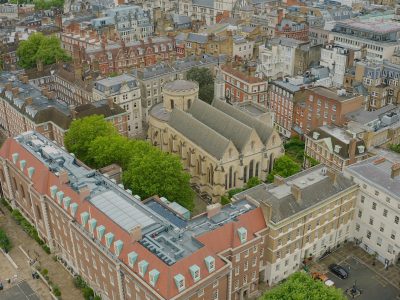
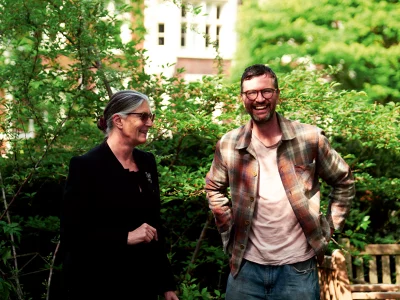
Law and borders: An interview with the Master of the Garden 10 years on
Patricia Robertson KC, Master of the Garden, has a walk around the Garden chatting with Head Gardener Sean Harkin, reflecting on her almost ten years in the role.
Master Robertson and Sean in the Pond Garden
S: It will soon be ten years since you took over as Master of the Garden. Can you remember taking on the role?
At the time, I was newly liberated from six years on the Bar Standards Board, the last three of those as Vice Chair of that Board. That had involved a great deal of time in various committees as well as the Board itself, each with daunting amounts of paper to digest. When I had to negotiate a tricky regulatory issue, I would often invite the relevant person to join me for laps of The Inner Temple Garden to talk it through in an environment that fosters calm and civility.
Before becoming Master, I had been Assistant Master to the previous Master of the Garden, Master Sells, who had taught me the ropes and whose enthusiasm for everything related to the Garden was, and still is, unbounded. One of the many pleasures of being Master of the Garden is that it’s all about talking through what’s being done or what’s planned, often whilst in front of the plants in question or in an informal chat over Zoom, with only the necessary minimum of paperwork and formal meetings.
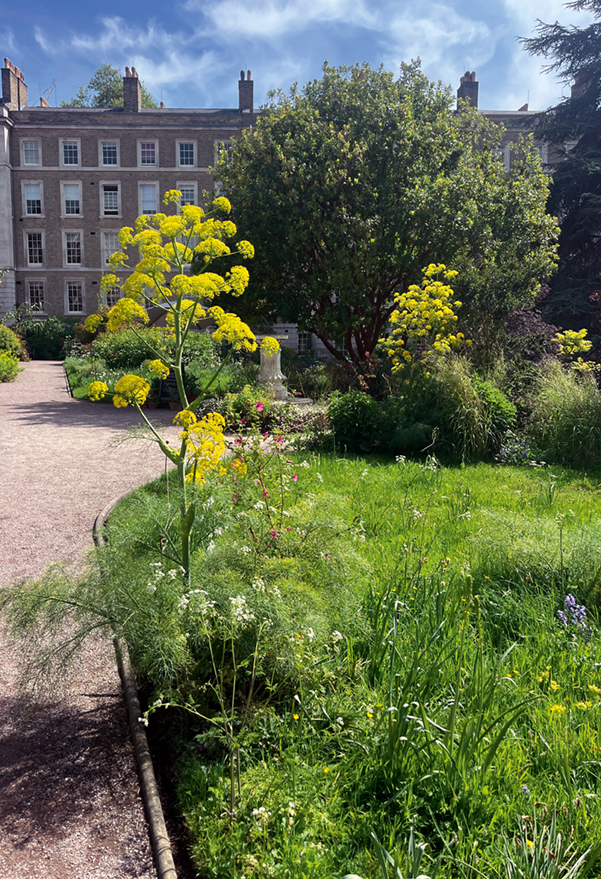
S: Have you always been passionate about gardens and plants?
Yes! I remember plants I have met going back to childhood, such as the first Ceanothus I encountered in a garden on my way to school, which seemed to me a miraculous colour to meet on a grey Edinburgh street. My grandad propagated so many fuchsias – his favourite plant – that in winter, when all the pots were brought into the lobby of his flat on the east coast of Scotland, you could barely get through to the front door. I designed a garden for my parents with a lot more enthusiasm than know-how decades ago, and my idea of the perfect Sunday is to spend it hands-on with plants – weeding, potting up, pruning.
S: Can you talk us through how you feel the Garden has evolved over your time?
Andrea had already moved the Garden a long way away from the ‘London Park’ style of planting, using succession planting to create constantly evolving displays full of contrasting textures in the high border and King’s Bench border, as well as an area devoted to drought tolerant plants, many of them from South Africa, around the steps.
Since you took over, as well as extending the beds around the west side of the lawn to add more interest and creating a garden room around the pond (both a great success), the emphasis has been on developing a romantic look that works with nature and enhances the biodiversity of the garden. This has included extending the meadow and the tree circle planting, creating dead wood areas for insects, allowing more self-seeding and letting seed heads stand into the autumn, and replacing the liriope under the plane trees with a much more diverse ecosystem of plants. Your success in creating a much-needed oasis for wildlife in the city has been recognised with numerous awards.
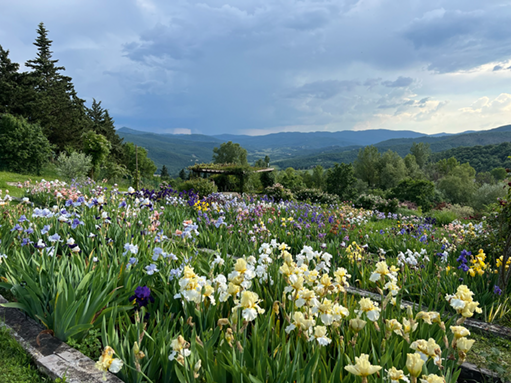
This approach to gardening involves a particularly delicate balancing act between letting nature have its way and exercising control. At certain points in the cycle of the year, we might have to tolerate some dishevelment in a few areas of the garden if we are going to create a rich and complex habitat, whilst at the same time we need to make sure that there are always other areas looking their best so that the garden remains a spectacular venue for events and a delightful refuge for those who live and work around it. The (rare) miner bees have given these developments a big thumbs up by colonising the meadow!
S: Some may not be aware that you also run an iris nursery in Umbria and are developing a garden there in your spare time. How did you come to be propagating iris, and can you describe the garden?
My husband is an art historian whose work is mainly based in Italy, and so we acquired a small farm in Umbria as a base. It’s an ‘agriturismo’, which means a mix of holiday rentals and agriculture. We make our own olive oil and, on finding that the local plant nurseries were often quite limited in the range of plants on offer, I decided to create Umbria’s first (and only) specialist iris nursery.
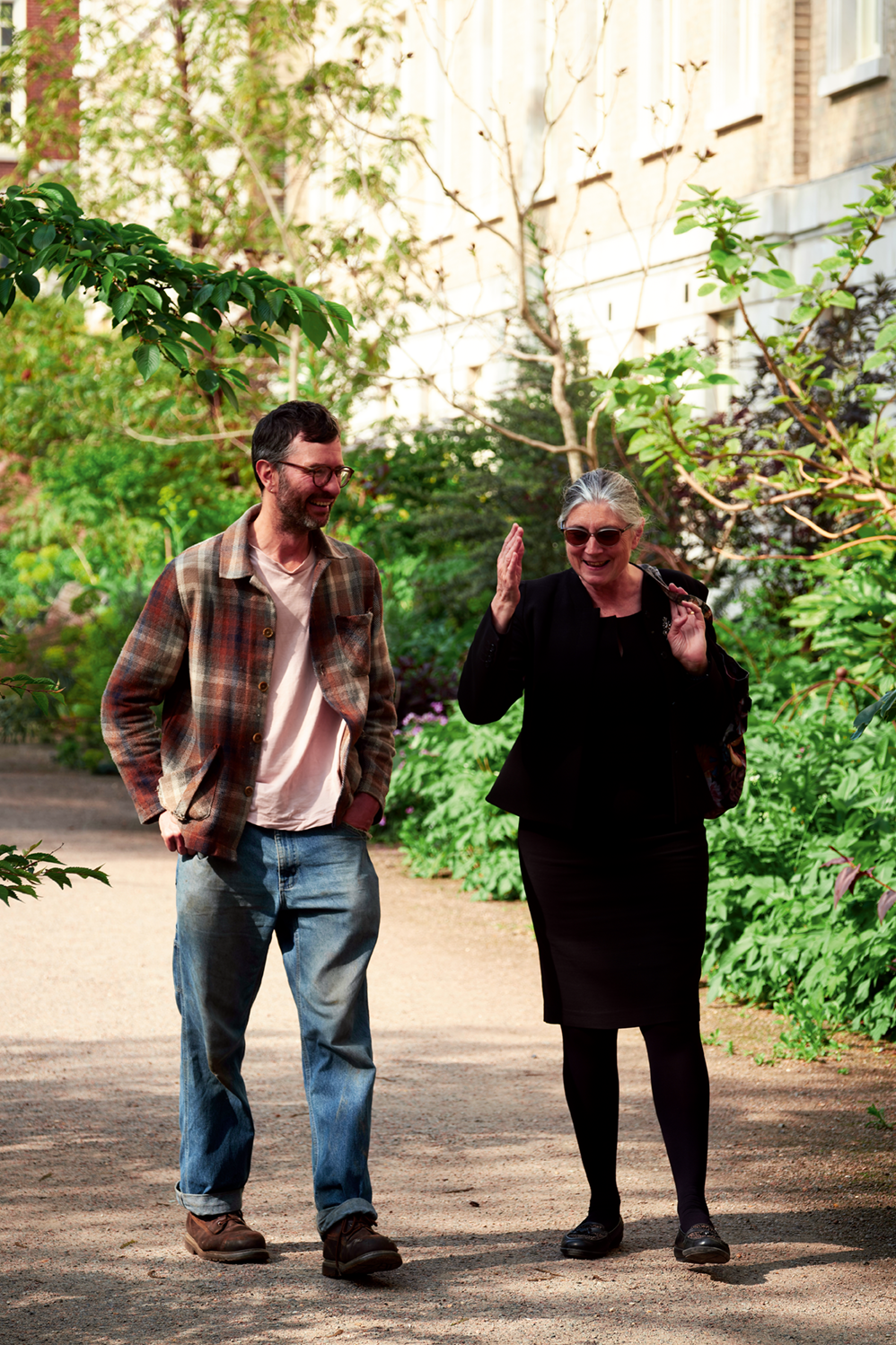
We started with irises because they grow well in the local conditions, are drought tolerant (increasingly important), enthusiasts will seek them out online and we can send them out bare root in the early autumn to anywhere in Europe (with the season for that work coinciding with the legal vacation). This means our market is not limited to those who happen to pass by our little nursery. Over time, I hope to make some crosses from our irises to create new cultivars and to start propagating day lilies, roses, herbaceous geraniums and grasses from our extensive collections here. However, that will need to wait for some future moment when I can devote more time to it!
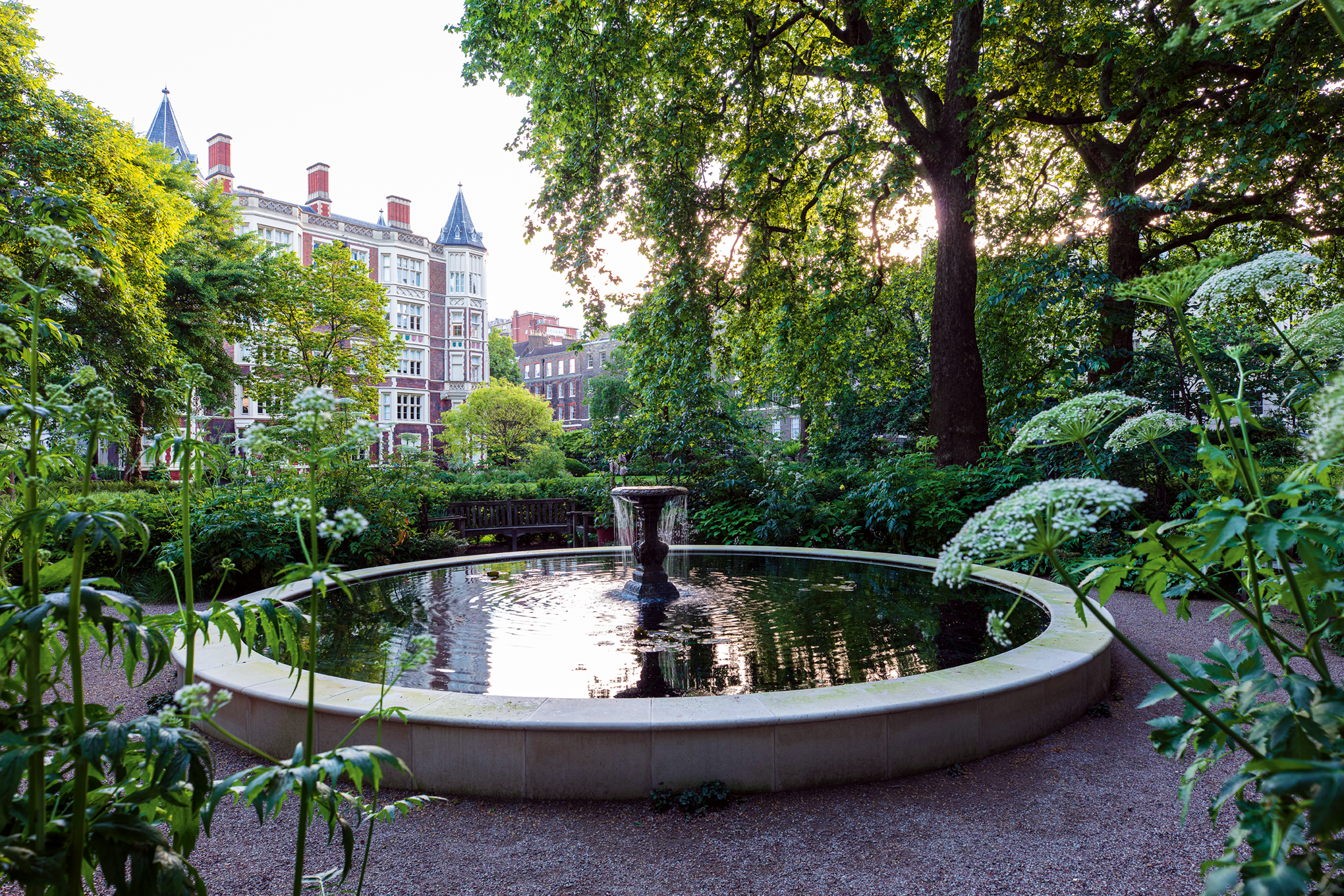
In order to market our irises and also create a venue for events, I created a display garden with panoramic views over the valley below. Visitors can see some 850 cultivars of bearded irises as well as roses, peonies and a wide range of grasses and herbaceous perennials. The plants we use have to be able to cope with temperatures ranging from around -8C in winter to 39°C in summer. Water has a key role in the garden, with a central pond (for the water irises), a cascade and a formal water feature inspired by the hundred fountains at Tivoli (but achieved using very simple materials and without the benefit of a Cardinal’s budget). However, as water is a precious resource, all of this recirculates rainwater captured from the hillside above and is powered by photovoltaic panels. We open the gardens in May, when the irises are in flower, and for the rest of the year, they are a resource for our rental guests and a venue for weddings and events.
S: Where do you find your inspiration, and can you use three words to describe your gardening style?
I don’t think I have any one particular gardening style that I follow. I borrow like a magpie from all sorts of influences. One advantage of having a lot of space to create a garden (which is a luxury I have in Italy) is that you really can adopt the ‘right plant, right place’ philosophy because there will be a boggy patch somewhere for the moisture lovers and a sun-baked spot elsewhere. This is harder to achieve in my heavily overshadowed North London garden, when it is difficult to resist the temptation to include things I love that just won’t thrive there, like hostas, which are immediately shredded by the thriving slug population.
I don’t think I have any one particular gardening style that I follow. I borrow like a magpie from all sorts of influences.
However, I suppose the constants are an emphasis on texture, scent and light. I like plants that make you want to touch them, or which introduce movement, such as silky grasses. Perfume is indispensable to a garden, and roses, irises, peonies and scented geraniums are all generous in that regard. The play of light and the way light changes over a day and over the year is the fourth dimension of gardening; the same iris will be transformed depending on whether the light falls on it or comes from behind, while tiny sparks of light catch the tips of a transparent screen of Stipa gigantea and ripples of light animate the pond, brightening even a wintry day.
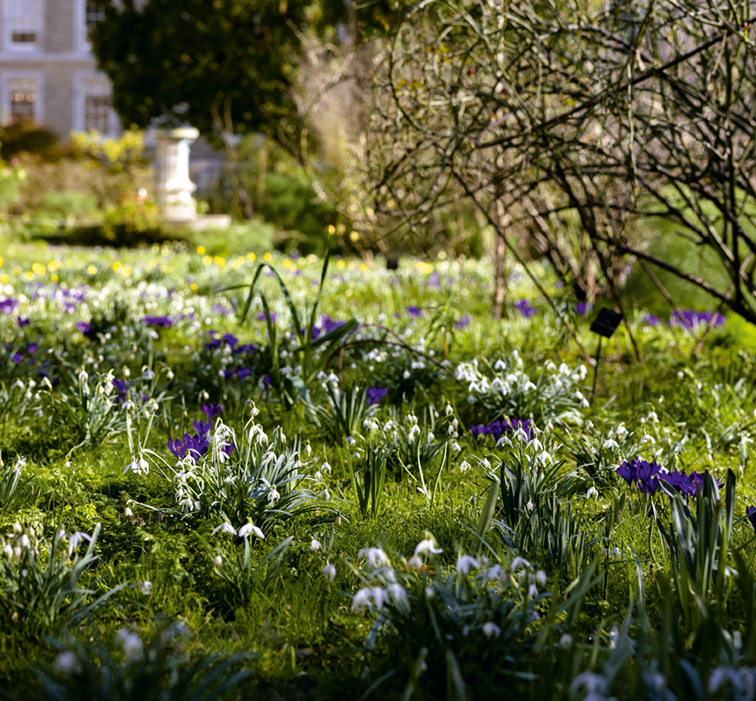
I try to think about each of these aspects when planning – but also remember that gardens rarely respect one’s plans – and to allow for an element of serendipity.
S: Do you have a favourite garden or landscape that you would recommend?
It is very difficult to choose, so I will cheat and give you more than one. Just over a year ago, I visited the Western Cape area of South Africa. Kirstenbosch seemed to me the most beautiful botanical garden I had ever seen. The position below Table Mountain is both a spectacular setting and responsible for creating a special microclimate for the garden. The planting is managed in a way that is breathtaking, whilst at the same time illustrating the different groupings within this extraordinarily diverse plant kingdom. From there, we went down to the coast just to the east of the Cape, to an eco-resort whose mission is to preserve an unspoilt section of South Africa’s fynbos. From a distance, the hills might just look to be covered by a sea of green bushes (or that was my husband’s perspective), but when you get up close, this apparent uniformity turns out to be an illusion. There are more different species per square metre than in practically any other environment on Earth, including rainforest. The Proteas may be the most spectacular of these, but some of the least imposing have the most amazing scent and, in combination, the fynbos has a unique and memorable perfume. It was humbling to see what a spectacular, self-balancing garden nature had created for itself, sustaining a vast range of wildlife from sunbirds to leopards.
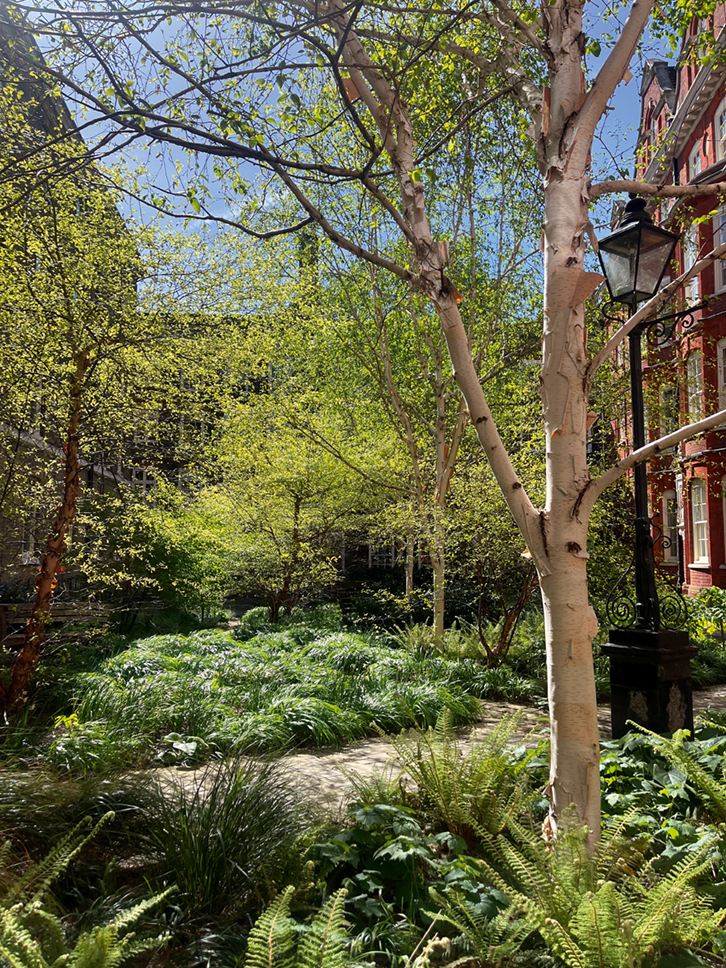
My other long-standing favourite is the Gardens of Ninfa, south of Rome. Here, again, the position is unique: the gardens were created amidst the ruins of a medieval town and are nourished by crystal clear, cold waters running from the massive mountain behind the site. The head gardener told me that the trees here grow much faster than the normal rate because of the conditions. The style is full-on dreamy romantic, with roses tumbling over the frescoed walls of ruined churches, and mosses and ferns colonising trees growing through the middle of abandoned watchtowers.

S: What do you see as the challenges facing The Inner Temple Garden going forward, and is there anything you would like to see through during your time?
The most immediate challenge, which is also an opportunity, is to plan the greening of some areas of the car park, in conjunction with the work of resurfacing. I confess, I have nursed territorial ambitions in respect of the car park since I first became an Assistant Master of the Garden, so this has been a very long time in coming to fruition, but plans are now being actively developed within the Estates Committee.
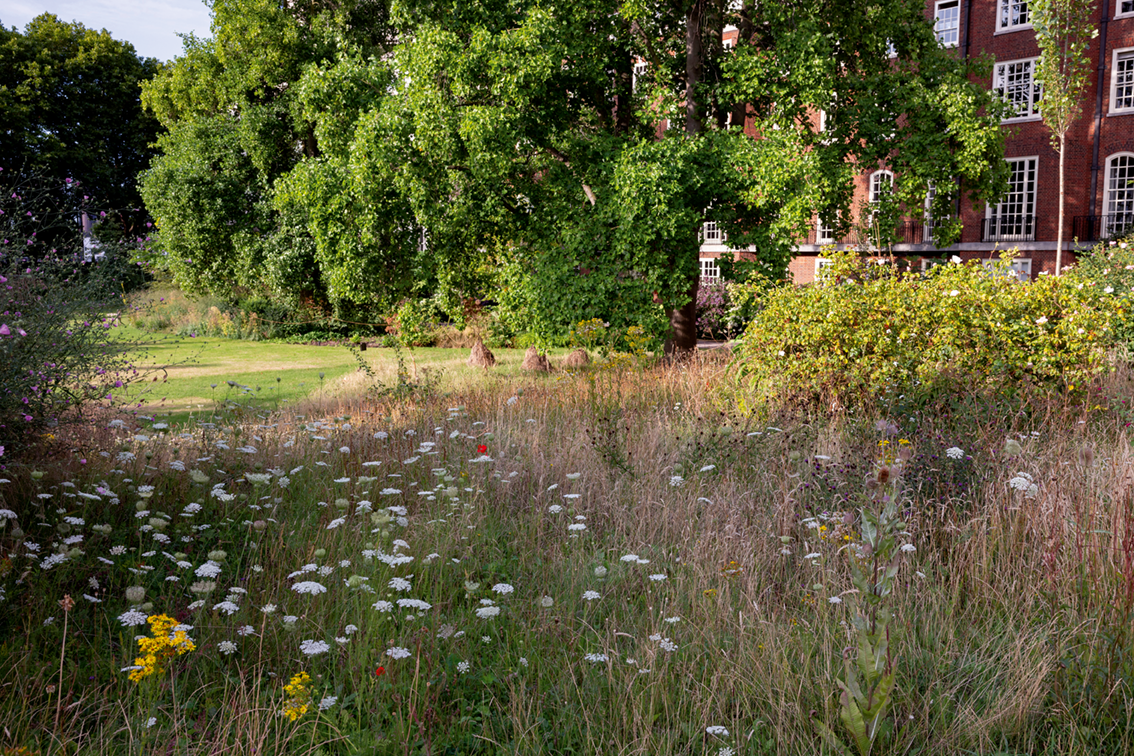
As you know, the aim of the Garden team, which we hope others will support, is to use discrete areas of planting to enhance the car park whilst protecting the roots of trees, and reducing water run-off by providing planting beds in key areas where flooding in heavy rain can otherwise create problems. We also hope to improve the relationship between the Treasury Building and the Garden. Whilst there will, of course, be a continued need for car parking, the number of cars needing to be accommodated is on a downward trajectory. At the same time, there is greater awareness of the need to ensure that the Inn attracts and retains its tenants by offering an environment in which people are positively enthusiastic about living and working. Ultimately, the Inn’s ability to fulfil its wider mission depends on maintaining its revenue base.
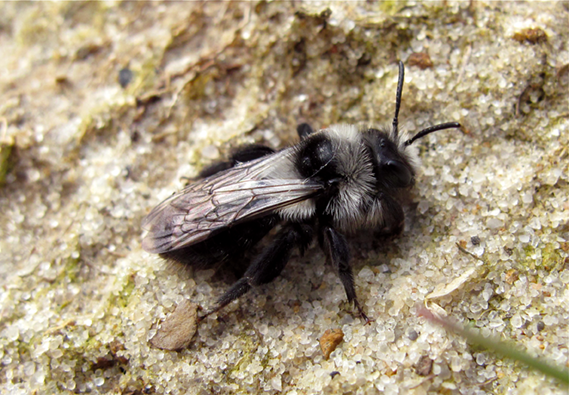
I hope that I can see this through to completion of the planning phase. Just as the overhaul of the planting in Hare Court transformed it into a calm and welcoming space, I would hope we can create green oases within the current car park that welcome you into the grounds of the Inn, rather than confront you with a sea of parked cars to navigate through. More broadly, like all gardeners, the Garden team will need to work out what aspects of their approach need to be changed or adapted to respond to the challenges of climate change and to support the Garden’s objectives of greater sustainability. This has, rightly, been a particular focus in recent five-year plans.
S: Lastly, what is the best thing about being Master of the Garden?
The biggest pleasure has been the opportunity to talk endlessly about plants with you on circuits of the Garden and to chat to the team about the tasks in hand! However, I do think it’s quite important that people reading this understand what being Master of the Garden doesn’t involve, because all too often I am given credit I don’t deserve. Just because I am an enthusiastic gardener doesn’t mean I have anything like the depth of expertise that you and the Garden team bring to bear. Decisions about the development of the Garden are firmly yours and not mine, as is all the hard work that goes into realising that vision.

The role of Master of the Garden is not to second-guess that expertise or impose their own ideas. Rather, it includes providing a sounding board for ideas, occasional constructive suggestions advanced in the spirit of a critical friend, guidance on the budgeting and planning process, and advocacy for the Garden within and outside the Inn. Above all, the Master of the Garden is a crucial interface, in governance terms, between the Garden team and the wider objectives and concerns of the Inn.
That takes me to another of the best things about the role, which is the fact that the Inn is enormously supportive of the Garden, so when we are an agenda item in any of the Committees, including the Finance Committee, there is a great reserve of good will and understanding of what we are trying to achieve and how much we contribute to the life of the Inn. This makes it much easier to negotiate for the things the Garden needs. Equally, in recent years, we have had to modify some of our ambitions because the Inn needed to find savings and we, as a team, had to find ways to contribute to that. Happily, of all of life’s pleasures, plants represent the most bang for your buck. A particular triumph was persuading the Inn to finance our investment in snowdrops in what was a difficult year financially – a modest initial investment which is now paying dividends every February!
Patricia Robertson KC
Master of the Garden
Fountain Court Chambers
Sean Harkin
Head Gardener
